In modern pedagogy, parents will be able to find many copyrighted methods for raising a child from the cradle. However, the development program of the Italian scientist Maria Montessori is rightly considered the most demanded. Her method, of course, with an eye to new achievements in pedagogy, is actively used in numerous development centers and kindergartens in many countries of the world. What is the secret of this popularity?
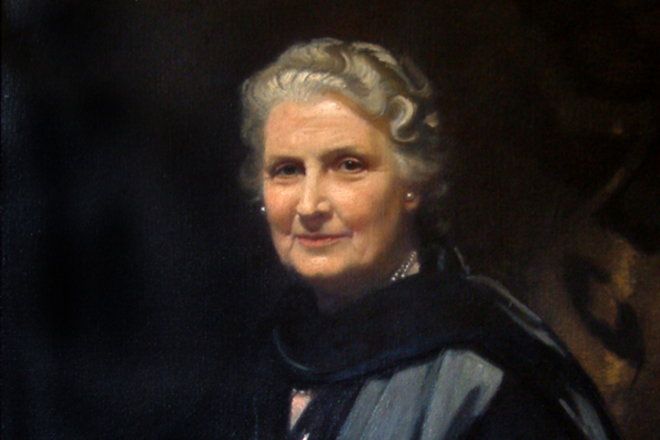
A bit of history ...
The founder of the well-known technique is the first woman in Italy who mastered the profession of a doctor. Working with kids with developmental disabilities, the author developed her own rehabilitation course, which was highly appreciated in the pedagogical environment.
In 1907, for the first time, the Children's Home opened its doors to healthy preschoolers and schoolchildren. It was in this institution that the very methodology we are talking about today was applied.
In the future, the method became widely known - Montessori gave a large number of lectures, issued several unique books and many teaching aids. Pre-school educational institutions appeared around the world in which educators used this method, and a little later experimental schools appeared. For over a hundred years, she has remained at the peak of popularity among parents and teachers.
The essence of Montessori pedagogy
Perhaps the main principle of this method is the idea of self-education of the baby. Parents and caregivers need to understand what the child is interested in, create the necessary developing conditions and explain how to get knowledge. Hence the motto of the educational system: “Help me do it myself!”.
Key points:
- Classes are held in a specially organized environment, divided into several zones (we will talk about them a bit later), in which manuals for work are conveniently placed.
- The groups are occupied by preschoolers of different ages: the older ones take care of small children, and those, in turn, try to learn from older children.
- Teachers should not impose anything on the child, he will decide what is interesting for him (to buy a sweet little girl, paint or play with in-box frames), how much time he will spend, whether he will study alone or in company.
However, do not think that permissiveness flourishes in groups and classes. Children are taught to abide by the following regulations:
- What a child can do on his own, he performs without the participation of a teacher or parent. It develops independence, self-confidence.
- Children should be quiet, not interfere with others playing and practicing. However, they can “let off steam” in special rooms for relaxation.
- All toys, cubes and writing utensils with which the kids interact, they must wash, fold and put in place. It develops in children respect for other people.
- The one who first took the doll or inserts, and is engaged with these benefits. In this way, children are educated in understanding their own and others' boundaries.
Compliance with the rules, streamlining activities brings stability to children's life, allows preschoolers to feel more confident, fosters patience and respect for peers and adults.
What is special about Montessori classes?
In kindergartens, groups are divided into several zones and filled with a variety of didactic aids. Such zoning helps educators organize workspaces and maintain order, and children can better navigate a variety of materials. So, more about zoning:
- Practice area Helps children acquire basic household skills. For example, children from one to three years old learn to sweep the floor with a brush and dustpan, fasten and unfasten buttons of different sizes, Velcro, dress and undress dolls. Children from three to eight years old learn to clean shoes, wash and iron clothes, wash and cut vegetables for salads and even polish metal objects.
- Sensory area includes items that vary in shape, size, color and weight. Games with similar materials (foam balls of various diameters, a set of caps of different sizes for jars and bottles) develop children's motor skills in the hands and fingers, tactile sensations, as well as mental processes - memory and attention.
- Math zone consists of materials that help kids learn the count, get acquainted with mathematical symbols and geometric shapes. For kids, models of geometric bodies are selected. Older children study mathematics with the help of bills, wooden tablets with examples of calculations, sets of figures that give an idea of fractions. Solving such tasks, the child also improves abstract thinking, fosters perseverance.
- In the language zone the baby will find manuals designed to study letters and syllables, expand vocabulary. For example, textured letters, boxes with pictures “What is this?”, “Who is this?” for the smallest, as well as the box office letters and syllables, sets of printed and uppercase letters, the book "My First Words" for older children. With their help, children learn to write and read and write.
- Space zone introduces the Universe, the environment, the mysteries of nature and weather phenomena, culture and customs of the peoples of the world. Figures of various animals await young children, while older preschoolers deal with maps and collections of minerals.
INTERESTING: Bizibord - a developing board with locks and buttons for kids with their own hands
Photo:
Controversial Montessori Methods
The main advantage of the Montessori method is that the child develops independently, at his own pace, without much intervention from adults. As for the significant disadvantages of the technique, then the experts include the following:
- Most manuals are aimed at developing fine motor skills, logical and analytical thinking, and intelligence. Creative and emotional sphere are practically not affected.
- There are no plot role-playing and outdoor games, which, according to the author, only inhibit the intellectual development of the baby. But scientists have proven that playing in preschool childhood is a leading activity. The child learns the world around us, human relationships, playing and interacting with peers.
- Psychologists advise mothers of shy and withdrawn children to be very cautious about the Montessori method. It involves considerable independence, and quiet kids are unlikely to ask for help if they suddenly can not do something.
- Teachers note that after a democratic atmosphere prevailing in Montessori groups, the child hardly gets used to the rules of ordinary kindergartens and schools.
Currently, development centers and many educational institutions do not practice the Montessori method in its original form. Modern teachers only the best is taken from itadding your own best practices.
Conversation with a Montessori Specialist in the Early Development of Babies: What Parents Need to Know for Their Baby to Develop from Early Years
Our opinion
The early education methodology of the Italian doctor and scientist Maria Montessori is quite interesting and peculiar. Children raised in Montessori classes are independent and self-confident, able to solve everyday problems. They not only defend their opinion, but also are able to bear responsibility for their own actions.If you have a desire to see these qualities in your child, try reading several books and manuals of the author:“House of the child”, “My method”, “My method. Guidelines for raising children from 3 to 6 years old ”,“ Help me do it myself ”,“ A Montessori child eats everything in a row and does not bite ”,“ Self-education and self-education in elementary school (collection) ”,“ Children - others ”,“ Montessori Home School (set of 8 books) ”,“ Absorbing the mind of the child ”,“ After 6 months it's already late. A unique technique of early development ” - and take note of some tips on child development and parenting.
Further:Do-it-yourself Montessori technique: we organize the development environment at home
Useful book – 60 lessons with a child according to the Montessori method
We also read about other popular methods of development and education:
Julia in her experience shares the positive and negative sides of the Montessori method:
Film about Maria Montessori
Montessori Method. Development of children from 8 months to 3 years
Every child is given by nature to be an intelligent and successful person. The adult's task is simply to help the baby reach its full potential, learn how to independently comprehend the world. And he can comprehend it only through experience - the experience of thought, feeling, action.
Playing with the Montessori material, children develop fine hand motor skills and hand-eye coordination, improve coordination and accuracy of movements, and develop their sensory abilities.
These seemingly simple exercises - transfusion of water, sifting a mixture of cereals through a colander, wiping water with a sponge, folding napkins, sprinkling cereals with a spoon, catching balls, and washing and sweeping floors so unloved by most adults, etc. - act on the baby just bewitching. Well, now he’s just like an adult, he can do everything and does everything on his own! This greatly increases their self-esteem, and as a result - self-confidence appears. Need I say how important this is!
Mom’s School: Montessori Child Development

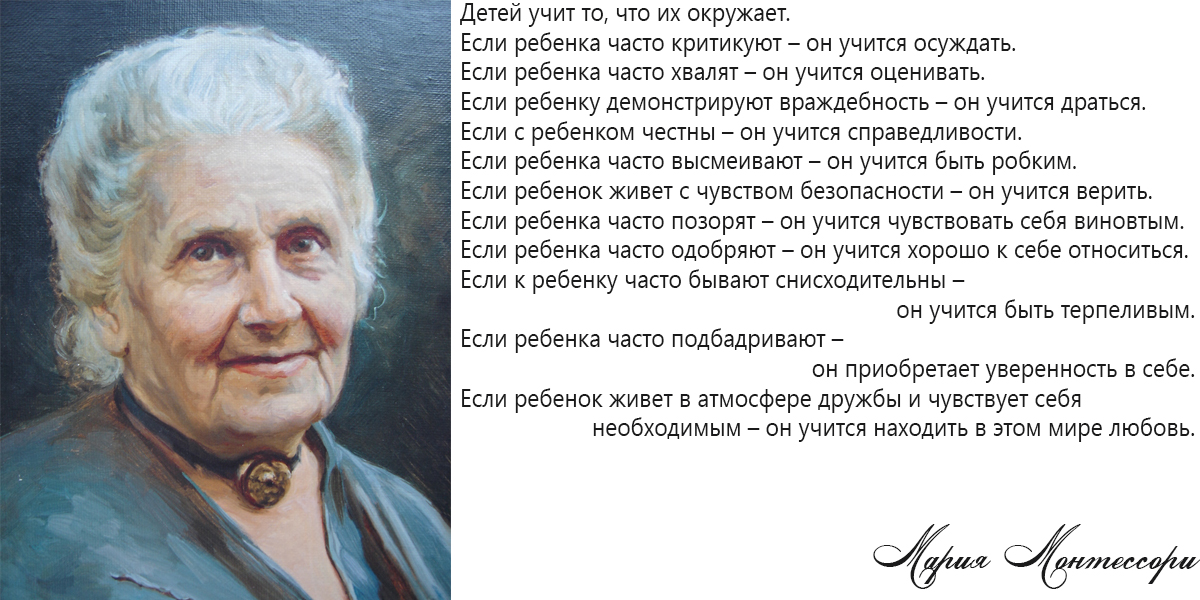
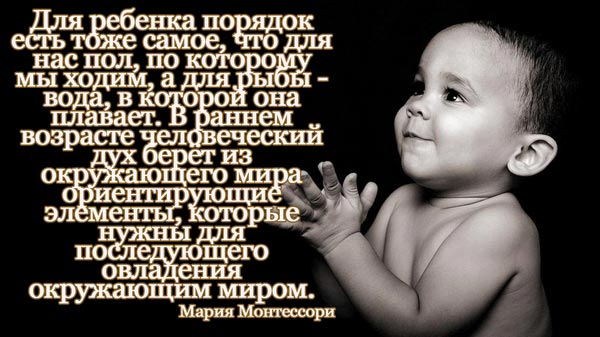
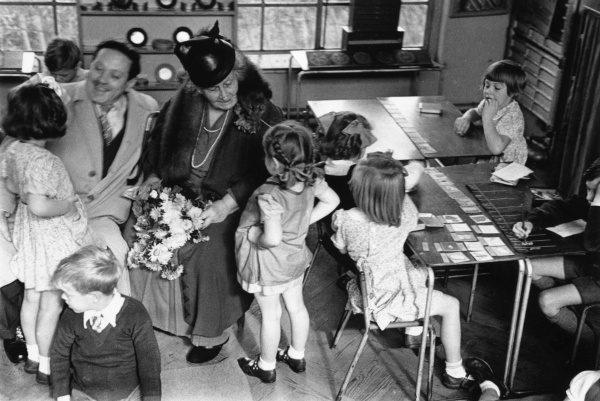
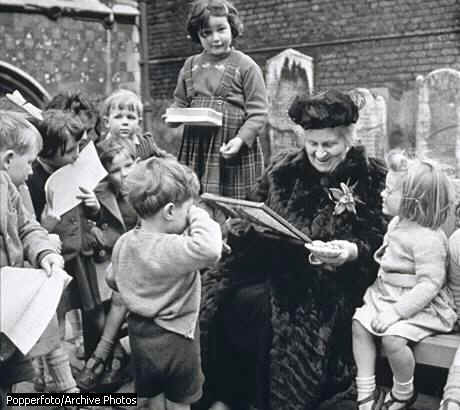
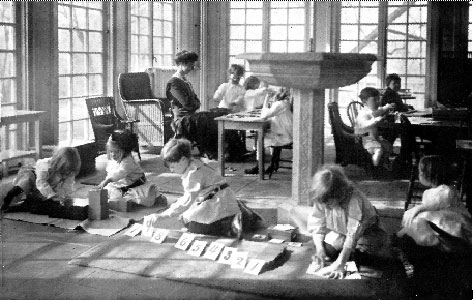
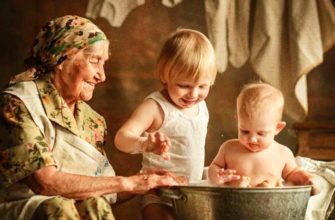
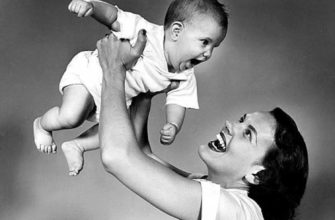




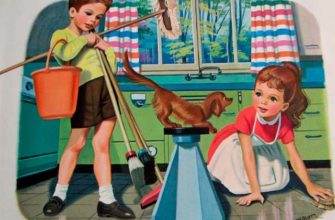
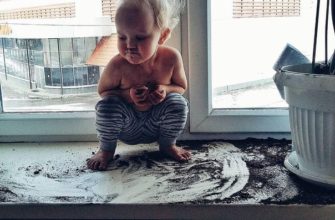
I fully support the absence of role-playing games in this technique. They can drive a baby into one role for many years. And it’s good if it will be a leader’s role, but not everyone gets it. Personally, I am against them in education. That's why I really like the Montessori technique!
I do not think it is right to raise a child by any method. Each rookie should have his own approach. The parent of the CAM should be engaged in education, and not spy on the methods of various scientists. In the Montessori methodology, the emphasis on upbringing is on the self-education of the baby, but how else can the baby understand and analyze something for himself? Rave. Without interfering in the upbringing of their child, parents can break firewood! I'm talking about bad habits and bad company. I express my negativity to any methods of raising my baby! Dear mothers, bring up children YOURSELF, otherwise it will not be your child, but Montessori ...
Reading books on the development and upbringing of children, knowing which methods are used to develop a child is very important. Not only mothers themselves bring up the child, but also educators, teachers and the environment. And where, in what environment the child will be - should not be indifferent to us.
Hello! My grandson goes to Montessori kindergarten. Yesterday I witnessed a conversation between a teacher and one of my mothers. The conversation is as follows: the teacher told her mother about tm that her child was left without lunch because he did not have time to sit down and eat for the allotted 10 minutes. Mom was told that he would get lunch at noon. It is right? So often practiced in Sadiah Montessori?
Hello. I accidentally got into the article and caught a glance at a quick look: All the toys, cubes and stationery with which the kids interact, they must wash, fold and put them in place. This develops respect for other people in children.
It is unlikely that children can wash all toys and stationery, for at least 18 years of work in the Montessori system, I have not come across this idea.
Hello! All these "scientific systems" from the evil one, read carefully the biography of this Montessori, there are decent, normal Russian kindergartens, where your children will have a childhood with morning performances and holidays.
I completely agree with you